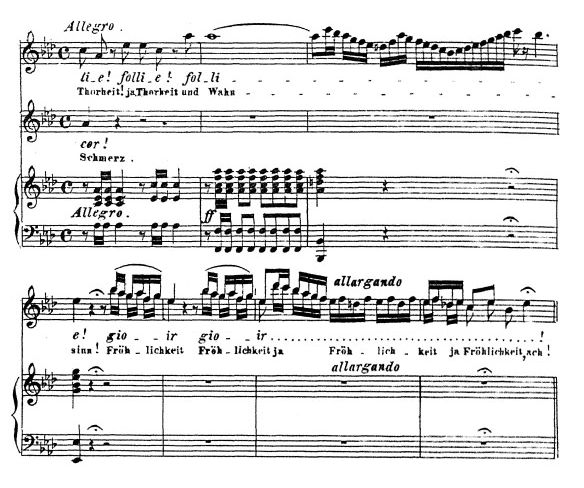
Value Of the Arpeggiated Exercise
One of the fundamentals of singing has to do with our muscles and just how we get them to stretch and become great friends, like in a community where all work together for the common good.
Sometimes, for a variety of reasons, our two main muscle systems become unable to move. If we can get the closer muscle to start closing (hooray for staccato exercises), then the stretcher muscle is able to learn how to do its job better. One way of focusing on the stretcher muscle and helping it to do its job, especially if the closer muscle sometimes seems like it just does not want to “let go enough” for a good stretch to be possible, is by performing an Arpeggiated Exercise.
An arpeggio is when we jump up and down the vocal staircase a few steps at a time. For example, in the major scale we step up one step at a time, from “Do to Re to Mi to Fa to Sol to La to Ti to Do.” In an arpeggiated exercise, we skip steps. For example, we step from “Do to Mi to Sol to Do.” Or if we wanted to get fancy and twirl around a bit, then we would step from “Do to Sol to Mi to Do.” In the more plain version we skip over the “Re and the Fa and the La and the Ti.” It is like moving up or down the staircase taking two steps at a time.
When we move one step at a time, it is like we are lifting weights; building muscle which is absolutely necessary for strength and precision. When we move by skipping a step or two, then it is like we are stretching between lifting. To be sure, there is still muscular strengthening, but this arpeggiated exercise helps us to release a bit, to let go, mostly because the adjustment from say “Do to Mi” is a bigger adjustment than from “Do to Re”.
With a bigger adjustment, the vocal cords are stretched and thinned more than for a smaller adjustment. We feel this as a more dramatic letting go of weight, heaviness, and thickness, as if we have just leapt up and feel the bigger change wherein we are quite a bit lighter. Thus, our stretcher muscle is more active, and we have more of a sense of difference between steps. This is good because at first we will not be sensitive enough to feel small changes, but will begin to notice larger changes sooner.
Finally, the arpeggiated exercise helps: 1. with balancing the closer muscle system and stretcher muscle system as they begin to coordinate with one another over a wider range, and 2. with the cords learning how to respond to this conditioning through the more dramatic changing of the size and shape of the vocal cords over this wide range. As all these muscles make adjustments that are a bit larger than what we would find step to step, the balance has to be pretty good. Or, we will attempt to skip up and down, but “slip and fall” instead.
about the author
Allen Rascoe Allen has been enjoying singing since he was a little kid. He officially studied voice at ECU and USC. However, he ran... Read More

RECENT ARTICLES
-

Career Your Opportunities for a Fulfilling Career in Singing
-

Basic Skills, Beginners, Tips Tips To Improve Your Singing Voice
-

Exercises, Warmups 10 Vocal Warm-ups to Change the Way You Sing
-

Basic Skills, Beginners, Exercises, Songs, Voice Teachers, Warmups What is My Vocal Range – Identify, Master and Expand Your Range
RECENT IN KNOWLEDGE
Recent Topics
- Beginning Voice Lessons (1)
- Breathing Techniques (1)
- Confidence (1)
- Experienced Teacher (1)
- Kids Singing Lessons (1)
- Musical Career (1)
- Practice (1)
- Private Lessons (1)
- Professional Singer (2)
- Sing (1)
- Singing Teachers (2)
- Style (1)
- Teach Online (1)
- Vocal Exercises (1)
- Vocal Health (1)
- Vocal Music (1)
- Vocal Pitch (3)
- Vocal Range (4)
- Voice Coach (1)
- Voice Exercises (2)
- Voice Training (4)
- Young Vocalist (1)
Categories
- Basic Skills (7)
- Beginners (8)
- Career (2)
- CCM (1)
- Contemporary Commercial Music (1)
- Crossing Over (1)
- Exercises (2)
- Online Lessons (3)
- Online Voice Lessons (1)
- Songs (2)
- Students (6)
- Tips (4)
- Vocal Coaches (1)
- Voice Teachers (2)
- Warmups (2)
Testimonials

















